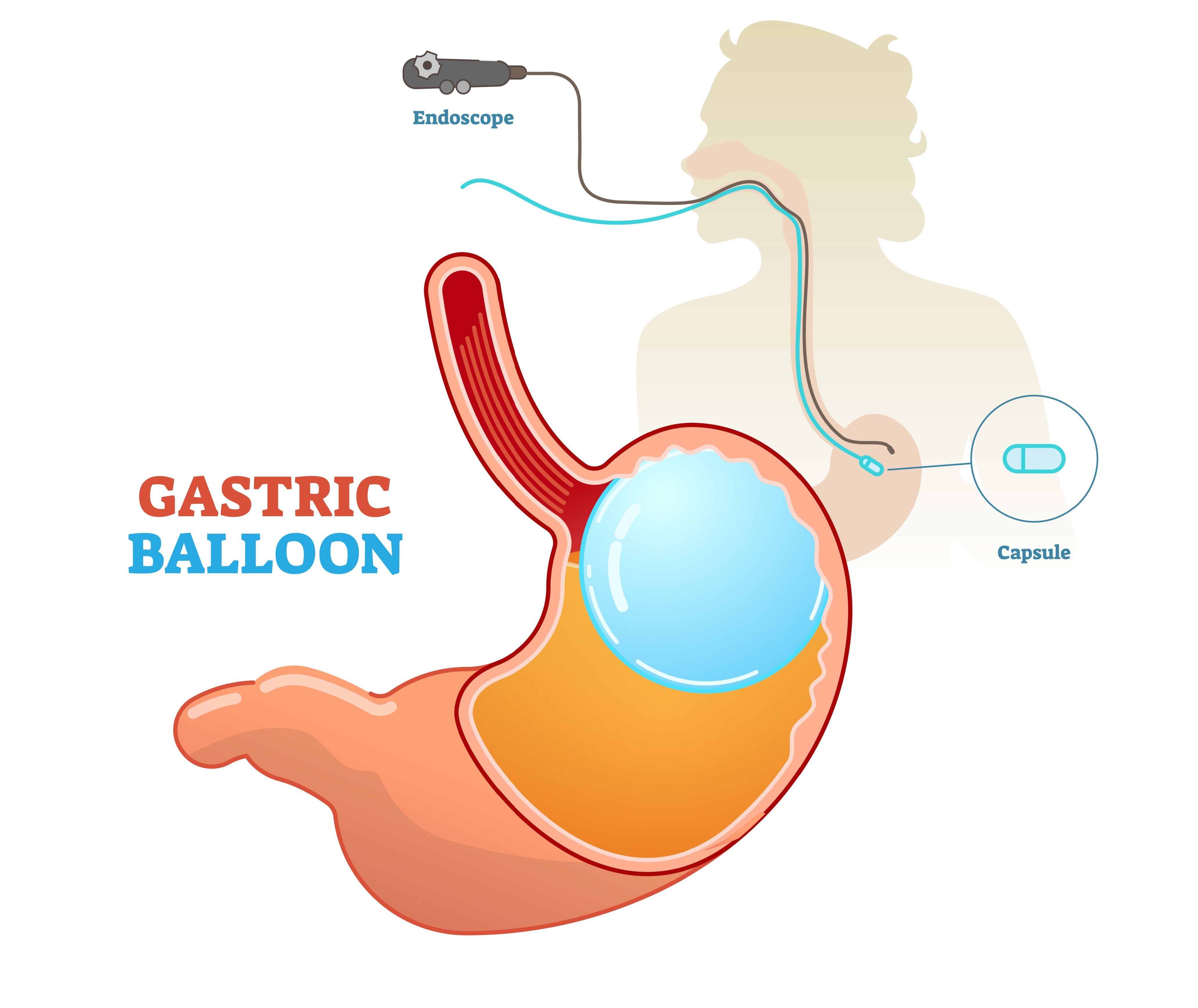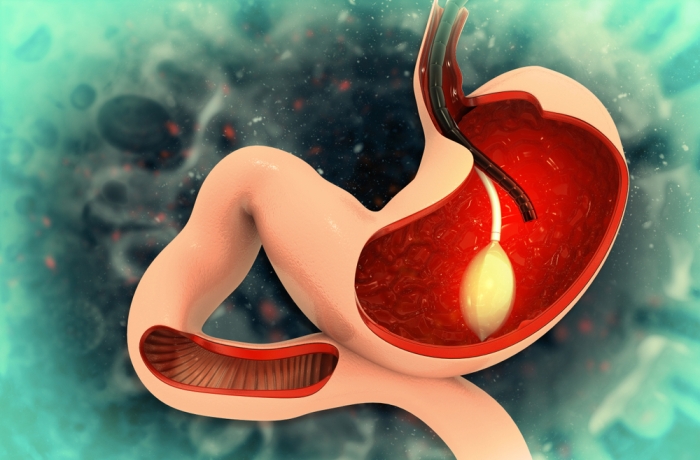Gastric balloon procedure is becoming increasingly popular for those who are struggling to lose weight through traditional methods such as diet and exercise.
Gastric balloon surgery is a minimally invasive weight loss procedure that is suitable for individuals with a body mass index of 30 or higher who have struggled with weight loss through traditional means. It involves the insertion of a silicone balloon into the stomach, which helps the patient feel full and eat smaller portions. While there are potential risks and complications associated with the procedure, such as infection and nausea, these can be minimized through proper preparation and post-operative care.

If you are considering gastric balloon surgery, it is essential to consult with a qualified healthcare professional to discuss your suitability for the procedure and determine the best course of action. Remember that this procedure is not a quick fix, and long-term weight loss requires a commitment to a healthy lifestyle, including a balanced diet and regular exercise.
Gastric balloon surgery, also known as intragastric balloon surgery, is a non-surgical weight loss procedure. It involves placing a balloon into the stomach through an endoscopic procedure to create a feeling of fullness and reduce food intake. While gastric balloon surgery may not be suitable for everyone, it is an effective weight loss option for individuals who are overweight or obese and have struggled to lose weight through diet and exercise alone.

A good candidate for gastric balloon surgery typically has a body mass index (BMI) of 30 or above, which is considered obese. However, individuals with a BMI of 27 or above and have additional health conditions such as high blood pressure, type 2 diabetes, or sleep apnea may also be considered. It's important to note that gastric balloon surgery is not a quick fix for weight loss and should be considered a last resort after other weight loss options have been tried and failed.
Before undergoing gastric balloon surgery, patients are required to undergo a thorough evaluation by their physician to determine if they are a good candidate. This evaluation will typically include a medical history, physical examination, and possibly additional tests such as blood work, ECG, or chest X-ray. In addition, patients must be committed to making lifestyle changes such as dietary modifications and regular exercise to achieve long-term weight loss success. To learn more about whether gastric balloon is the right procedure for you, you can read our article about Gastric Balloon for Weight Loss: Options and Alternatives.

Before undergoing gastric balloon surgery, there are several steps that patients need to take to prepare for the procedure. These steps can help to reduce the risk of complications and ensure that the procedure is successful.
One of the most important aspects of preparing for gastric balloon surgery is making lifestyle modifications. This includes changes to your diet and exercise routine, as well as quitting smoking if you are a smoker. Patients should aim to follow a healthy and balanced diet that is rich in protein and low in carbohydrates. Additionally, exercise can help to strengthen the body and promote weight loss.
It is also important to follow your doctor's instructions regarding medication usage. This may involve temporarily stopping certain medications or adjusting dosages to minimize the risk of complications during and after the procedure.
Before the procedure, patients will typically meet with their doctor to discuss what to expect during the procedure, including the steps involved and possible complications. Patients may also undergo a physical examination and other tests to ensure that they are healthy enough to undergo the procedure.
Overall, following your doctor's instructions and making necessary lifestyle modifications is crucial to ensuring a successful gastric balloon surgery. By taking these steps, patients can minimize the risk of complications and increase the likelihood of a positive outcome.
Gastric balloon surgery, also known as the intragastric balloon procedure, is a minimally invasive weight loss surgery. This procedure involves inserting a silicone balloon into the stomach to limit the amount of food a person can eat and make them feel fuller for longer. There are two types of gastric balloons, the traditional balloon, which is inserted through the mouth via an endoscope, and the swallowable balloon.

During the traditional gastric balloon surgery, the patient is put under anesthesia, and a deflated silicone balloon is inserted into the stomach via the mouth using an endoscope. The endoscope is a thin, flexible tube with a camera and light at the end. The camera sends images of the stomach to a monitor, allowing the surgeon to see what they are doing. Once the balloon is inside the stomach, it is filled with a saline solution, taking up space in the stomach, making the patient feel fuller, and restricting the amount of food they can eat.
On the other hand, a swallowable balloon is inserted by swallowing a small capsule containing the deflated balloon, and it is guided through the esophagus into the stomach using a thin tube. Once the balloon is inside the stomach, it is inflated with gas, making the patient feel fuller, and limiting the amount of food they can consume.
Both procedures take about 20-30 minutes to complete, and the patient can usually go home the same day. The patient is typically advised not to eat or drink anything for a few hours after the procedure to allow the stomach to adjust to the new balloon.
Gastric balloon surgery is a relatively safe procedure, but like any medical procedure, it does come with certain risks and complications. It's important to be aware of these risks before deciding to undergo the procedure. Some of the potential risks associated with gastric balloon surgery include infection, nausea, vomiting, and balloon deflation.
Infection is always a risk with any type of medical procedure. In order to reduce the risk of infection, it's important to follow all pre- and post-operative instructions from your doctor. These may include taking antibiotics before and after the procedure, avoiding certain foods and drinks, and keeping the insertion site clean and dry.
Nausea and vomiting are common side effects of gastric balloon surgery, and they may persist for several days after the procedure. However, there are steps you can take to reduce these symptoms. Your doctor may recommend anti-nausea medications, and you may need to follow a special diet for a few days after the procedure.
Balloon deflation is a rare but serious complication that can occur with gastric balloon surgery. If the balloon deflates, it may pass through the digestive tract and cause an obstruction. This can be life-threatening if not treated promptly. To reduce the risk of balloon deflation, it's important to follow all pre- and post-operative instructions, including avoiding certain foods and drinks and avoiding strenuous physical activity.
It's important to discuss any concerns you may have about the risks of gastric balloon surgery with your doctor. Your doctor can provide you with more detailed information about the risks and help you decide if this procedure is right for you.
Although gastric balloon procedure is generally considered safe, like any medical procedure, it carries certain risks and potential complications. To prevent these risks and complications, HealTrip Global takes several precautions before, during, and after the procedure. Some of these precautions include:
Overall, HealTrip Global takes multiple precautions to minimize the risks and complications associated with gastric balloon surgery. However, it is important to remember that no medical procedure is completely risk-free, and patients should always discuss the potential risks and benefits of any procedure with their healthcare provider before making a decision. To learn more about the this topic you can read our article about Gastric Balloon Surgery in Turkey: Safety, Effectiveness, and Risks.
After the gastric balloon surgery, the recovery period is relatively quick and straightforward. Patients typically stay in the hospital for a few hours after the procedure to ensure that there are no immediate complications. Then, they can go home the same day.
The first few days after the surgery can be challenging as patients adjust to their new stomach size. They may experience nausea, vomiting, and discomfort. However, these side effects usually subside after a few days, and most people can return to their normal routine within a week.
Post-operative care instructions will include specific dietary guidelines, such as a liquid or soft food diet for the first few days after the procedure. Patients will gradually transition to solid foods as tolerated over several weeks. It is essential to follow these instructions to ensure that the balloon stays in place and to prevent complications.
Exercise is also an important part of recovery. While strenuous exercise should be avoided for the first few weeks, patients are encouraged to take short walks and engage in light activity to aid in their recovery. Over time, patients can gradually increase their level of physical activity to promote weight loss and overall health.
It is essential to avoid certain activities after gastric balloon surgery, including heavy lifting, intense physical activity, and swimming. Patients should also avoid drinking carbonated beverages, as they can cause discomfort and increase the risk of balloon rupture.
It is essential to attend all follow-up appointments with your doctor to monitor your progress and ensure that the balloon is functioning correctly. If you experience any unusual symptoms or complications, contact your doctor immediately.
Mide balonu ameliyatı, vücut kitle indeksi 30 veya üzeri olan, geleneksel yöntemlerle kilo verme mücadelesi veren bireyler için minimal invaziv bir kilo verme işlemidir. Mide balonu ameliyatı hastanın kendini tok hissetmesini ve bu sayede daha küçük porsiyonlar yemesini sağlayacak silikon bir balonun mideye yerleştirilmesini içerir. Mide balonu ameliyatının enfeksiyon ve mide bulantısı gibi bazı potansiyel risk ve komplikasyonları olsa da, bu riskler ameliyat öncesinde uygun bir hazırlık ve ameliyat sonrası düzgün bakımla en aza indirilebilir.
Mide balonu ameliyatı olmayı düşünüyorsanız, bu ameliyatın sizin durumunuzda en iyi seçenek olup olmadığını tartışmak için alanında uzman bir cerraha danışmanız önemlidir. Bununla birlikte mide balonu ameliyatının hızlı sonuçlar veren bir çözüm olmadığını ve kilo kaybını uzun süreli devam ettirmenin dengeli beslenme ve düzenli egzersiz de dahil olmak üzere sağlıklı bir yaşam tarzına bağlılık gerektirdiğini unutmayın.
>